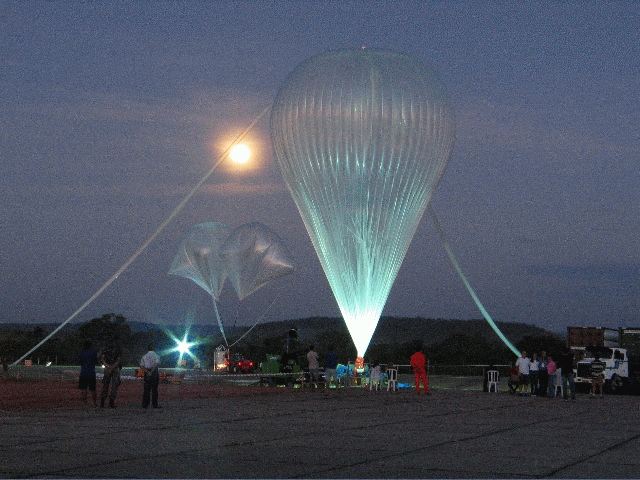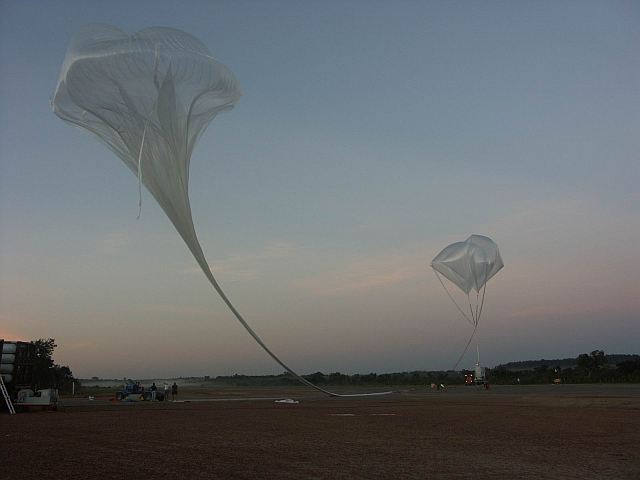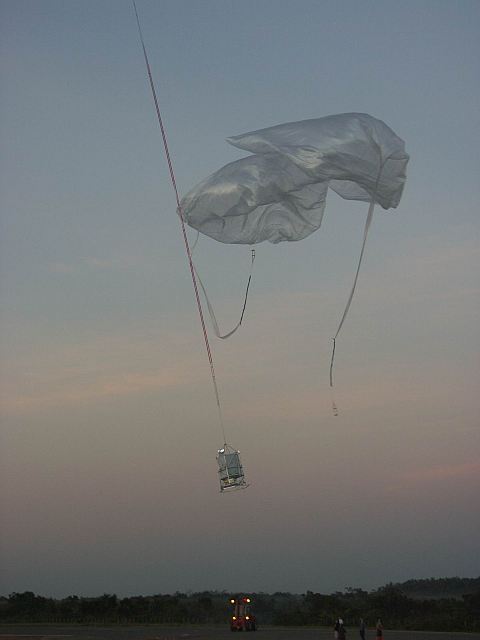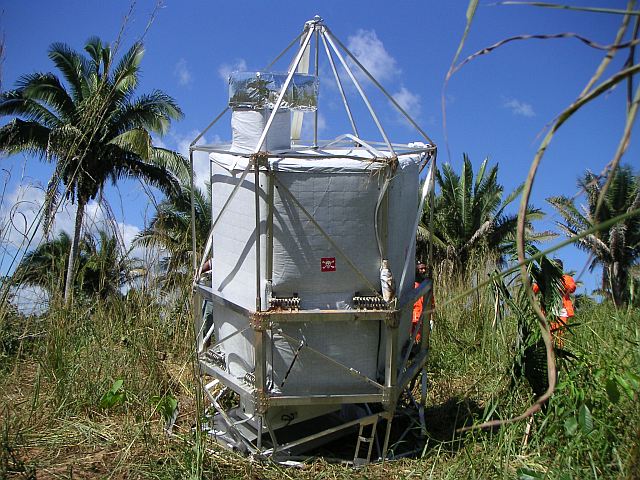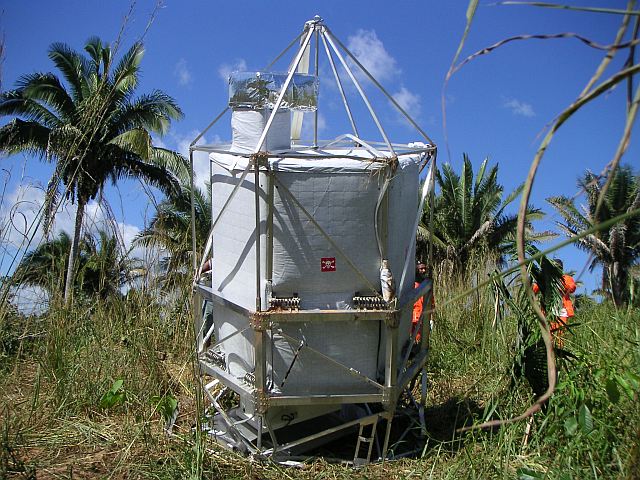Purpose of the flight and payload description
Is a spectrometer with six tunable diode lasers dedicated to in situ measurements of trace compounds in the upper troposphere and the stratosphere up to 35 km altitude.
The 6 laser beams circulate in a multipass HERRIOTT cell located below the gondola. The lower mirror of the two-mirror cell is fixed at the top of a deployable mast. The distance between mirror is about 3.50 m. Given the curvature of the two identical mirrors, two stable optical configuration can be used : first 86 reflections and 300 m optical path, second 156 reflections and 554 m optical path, by moving the lower mirror 5 mm up.
The mast is deployed during the flight to have the first measurements at the tropopause. Around the instrument, a rigid metal frame encompasses it, in order to have a instrument-safe landing.
Inside the instrument, three liquid nitrogen cryostats, hold the six diode lasers and the 12 detectors.
Vertical profiles of concentrations of a great number of species like O3, CH4, CO, CO2, N2O, HNO3, NO2, NO, HCl, HOCl, H2O2, and COF2, are measured with a very high vertical resolution, a high sensitivity and a high precision.
Details of the balloon flight
Balloon launched on: 6/22/2005 at 5:55 local
Launch site: Domingos Rego Aerodrome, Timón, Maranhao, Brazil
Balloon launched by: Centre National d'Etudes Spatiales (CNES)
Balloon manufacturer/size/composition: Zero Pressure Balloon model 150z Zodiac - 150.000 m3
End of flight (L for landing time, W for last contact, otherwise termination time): 6/22/2005 at 11:33 local
Balloon flight duration (F: time at float only, otherwise total flight time in d:days / h:hours or m:minutes - ): 6 h
Landing site: NE of Presidente Dutra city in the Maranhao State, Brazil
Campaign: ELBC (Equatorial Large Balloon Campaign)
Payload weight: 500 kg
The balloon was launched at 5:55 local time on June 22, 2005 using the auxiliary balloon method.
After a flight duration of 6 hours up to 34 km altitude, the separation command was transmited at 11:33 local time.
The landing occurred at coordinates 5.16°S, 44.42°W about NE of Presidente Dutra city in the Maranhao State.
The flight trajectory and separation of the gondola from the balloon were such that the landing was in a favourable environment and with a road in the vicinity for an easy recovery by helicopter.
However, hard landing resulted in damage of some mechanical parts of the gondola, but without problem for the instrument.
(extracted from SPIRALE team web site report)
In this first flight in the tropics SPIRALE instrument participated with other large payloads of the equatorial campaign for the validation of three instruments (GOMOS, MIPAS, SCIAMACHY) of ENVISAT dedicated to the chemistry of the Earth atmosphere.
A perfect direct match (simultaneous measurements at a distance less than 300 km) has been obtained between an overpass of ENVISAT and SPIRALE.
Several other overpasses will be compared using backward and forward air mass trajectories calculations, allowing for additional validations of ENVISAT measurements in the Tropics.
SPIRALE has measured in-situ vertical profiles of temperature, pressure, O3, N2O, CH4, CO, HNO3, NO2, NO, CO2 and HCl.
In addition to validation objectives, these measurements will contribute to a better knowledge of the dynamics and chemistry of the upper troposphere - lower stratosphere (UTLS), a key region for the formation of stratospheric ozone, the injection of water vapour, pollutants and aerosols, and for the global-scale circulation.
External references
- SPIRALE website Laboratoire de Physique et Chimie de l'Environnement - Orleans
- Balloons launched over Equatorial Brazil validate Envisat ESA website
- Mesures du chlorure d'hydrogène (HCl) et du formaldéhyde (H2CO) sous ballon stratosphérique en région intertropicale et interprétations Yassine MEBARKI Thesis, Université d'Orléans, 2009
- More evidence for very short-lived substance contribution to stratospheric chlorine inferred from HCl balloon-borne in situ measurements in the tropics Atmos. Chem. Phys., 10, 397-409, 2010
- Technical Note: Validation of Odin/SMR limb observations of ozone, comparisons with OSIRIS, POAM III, ground-based and balloon-borne instruments Atmos. Chem. Phys., 8, 3385-3409, 2008
2027If you consider this website interesting or useful, you can help me to keep it up and running with a small donation to cover the operational costs. Just the equivalent of the price of a cup of coffee helps a lot.

